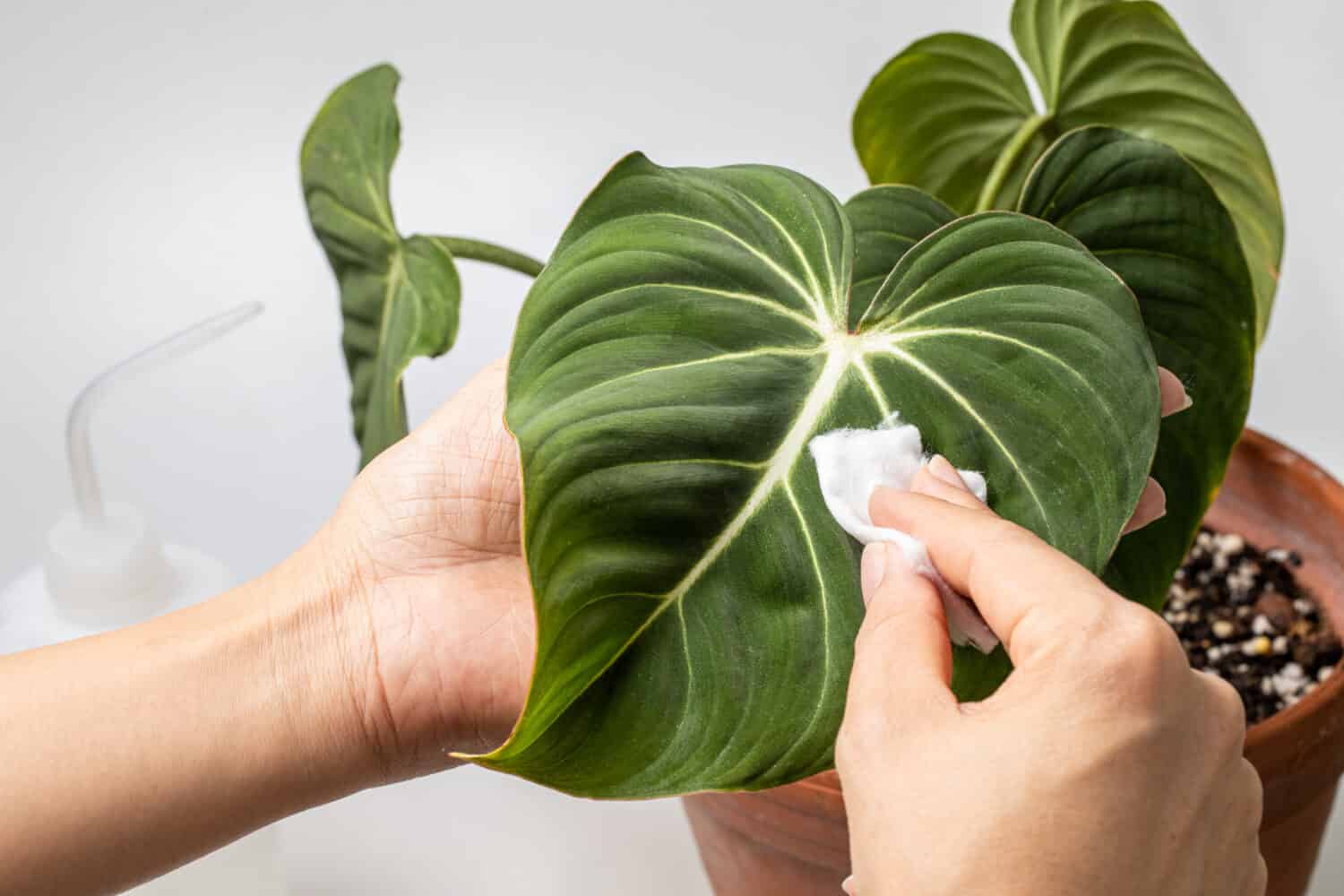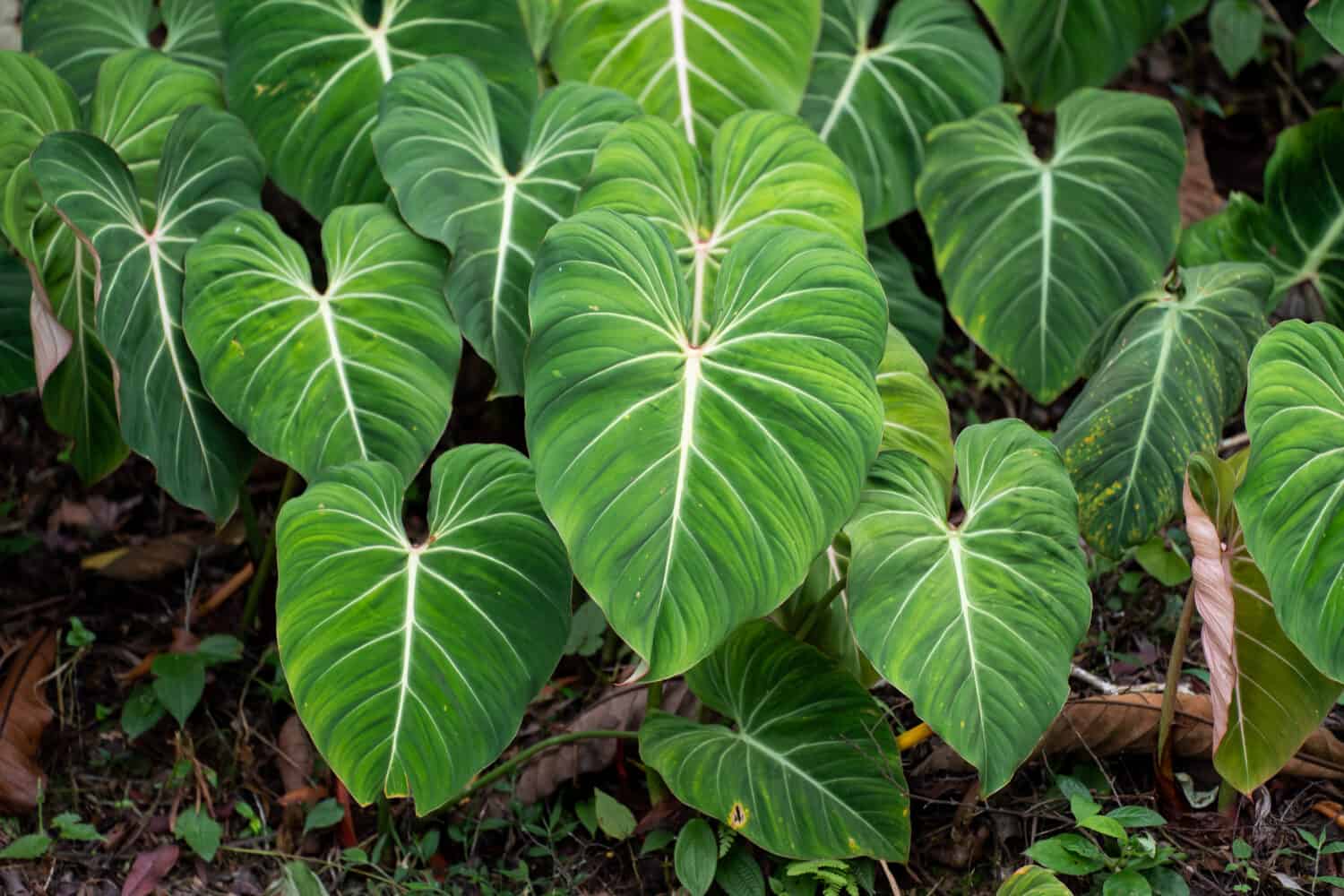If you haven’t seen or heard of the Philodendron gloriosum plant, then you must be living under a rock. This plant species has been a recently hot commodity, with a huge spike in popularity due to its unique and trendy appearance. If you’ve happened to get your hands on one of these plants, which are currently a bit rare due to conflicts of supply and demand, then you’ll surely want to know the ins and outs of proper Philodendron gloriosum care.
In this article, we’ll be delving into five of the most essential tips to help with your plant’s health and growth. Native to Columbia, the Philodendron gloriosum is a low-maintenance tropical plant that has the capacity to grow up to two-and-a-half feet tall. It might be a forgiving plant, but it’s important that you don’t make any critical mistakes. To learn all of the manners and methods that come with taking care of this fantastic plant, read on!
Caring For Your Philodendron Gloriosum: 5 Key Tips

Luckily, the Philodendron gloriosum plant is known to be fairly easy to care for.
©AngieYeoh/Shutterstock.com
1. Balance The Light (As Best As Possible)
Though it’s low maintenance at its core, there is a certain balancing act that comes with elements of Philodendron gloriosum care. In particular, the amount of sunlight that the plant receives can greatly impact its growth. You want to give it a great deal of bright light, but you also want that light to be indirect. This is how you can maximize the growth of its gorgeous leaves. Too much sunlight will result in burnt and droopy leaves, but too little can stunt the plant’s development. The best method is to find a place where there’s plenty of bright morning light that becomes dim and filtered in the afternoon.
2. Choose The Right Soil
When it comes to a Philodendron gloriosum, regular potting soil won’t cut it. Instead, you want to find a grittier kind of soil, designated for an aroid species, that gives plenty of draining room. This won’t just maximize growth but also solve the important issue of potential root rot. If you can’t find any suitable soil in the store, it’s actually pretty simple to make your own. Just use a combination of orchid bark, perlite, and potting soil in equal parts. Feel free to do a little bit of additional research and experimentation, though!
Some gardeners suggest mixing in a bit of horticultural charcoal to help mimic the plant’s natural environment. This additive is also great for increasing the pH of the soil and removing its impurities. Also, be sure not to unintentionally bury the rhizome of the plant, as the roots are the only parts necessary to be covered by soil.
3. Avoid Overwatering
This plant is so low maintenance that sometimes it becomes high maintenance. What does that possibly mean? Well, it means that this plant needs to have its water levels pretty closely monitored. Much like with poor drainage, root rot abounds in plants that are overwatered. Wait until the first two inches of the soil are dry before watering your plant again, and wait even longer during its non-growing winter months. On the bright side, you don’t need to stress if you suddenly realize you’ve forgotten to water it!
4. Keep It Warm
Tropical plants are used to certain environmental conditions. So, when conducting proper Philodendron gloriosum care, you need to reflect these conditions as best as possible. If you live somewhere where temperatures are regularly below 55 degrees Fahrenheit, then you might be better off with a non-tropical species. Hot and humid is the way to go for these plants, so if there’s a nearby air conditioner, maybe invest in a humidifier!
5. Don’t Sweat The Small Stuff
As we’ve said quite a few times, these plants don’t ask for much. They’re slow growing, so you probably won’t need to repot them for years at a time. Some good indicators that it’s time to repot your Philodendron gloriosum are when the leaves begin to droop over the sides of the pot and when the new leaves start to slow their growth and reduce in size.
They don’t need to be pruned regularly, just an occasional search for any straggly-looking foliage will do. If you’re someone who swears by fertilizing, try to keep it to once every few months. Too much of this will cause yellowing leaves and a general lack of growth. So basically, all in all, you don’t have to do too much work.
Suggestions For Propagating Your Philodendron Gloriosum

Philodendron gloriosums are simple to propagate via rhizome cutting.
©mokjc/Shutterstock.com
If you love your Philodendron gloriosum, it would make sense to take an interest in propagating it. It’s quite simple, but perhaps a little different than what you’re used to. The best method of propagating this plant is by cutting the rhizomes or underground stems. If there are any visible offshoots, that’s an easy option too. But otherwise, it’s as simple as making a precise vertical cut. Here are some more detailed instructions for propagation:
- The first thing you’ll want to do is secure some fairly sharp scissors and get to looking. Search out a piece of rhizome that has a few growth points and leaves, and make the cut. If you’re having trouble finding a good spot, you might have to temporarily remove the plant from the pot.
- Before placing it into the soil (or alternatively, sphagnum moss) wait a few hours, allowing the cut to callus over a bit.
- Place your new plant into its home, and quickly cover it with a plastic bag. This will help the plant retain humidity and moisture during this critical point in the process.
- Take the bag off for a few moments every couple of days, but generally, leave it on there for roughly four weeks.
- Then you can go ahead and move the plant over to it’s fresh soil and enjoy having a new Philodendron gloriosum to care for!
Possible Philodendron Gloriosum Issues

Although yellowing leaves aren’t always worrisome, they can sometimes indicate underwatering.
©mokjc/Shutterstock.com
There aren’t a lot of issues to run into when it comes to Philodendron gloriosum plants, but there are always certain indicators that you should be aware of if something does begin to go awry.
- Toxicity: This isn’t so much an issue that happens to the plant but rather an issue that can come from the plant. If you have any cats or dogs who are particularly curious, you should keep your Philodendron gloriosum away from them. Serious damage is unlikely, but your pet can get some severe mouth and throat burns if they decide to have a nibble.
- Yellowing Leaves: When leaves begin to yellow, this can mean a few things. It could be something as simple and unalarming as a new growth cycle taking hold. But it could also mean that your soil has dried out greatly, and your plant is trying to communicate to you that it’s being underwatered. Be careful, though, as it’s also an indicator that it’s being overfed!
- Droopy Leaves: It’s such a shame to see beautiful leaves like the ones on the Philodendron gloriosum begin to droop. When this happens, it’s an indicator that there are moisture issues. Letting the plant dry out too much is a common reason, but look out for other signs of wet feet, as this can lead to eventual, unfortunate root rot.
- Leaf Scorch: Leaf scorch, or browning of the leaves, is all too common for these plants. Due to their acclimation to humidity, they dry out very quickly. This is especially so if they’re placed in an unideal location near direct sunlight. Look out for the tips of the leaves beginning to brown, as that’s the first indicator that more severe browning is underway.
Thank you for reading! Have some feedback for us? Contact the AZ Animals editorial team.








